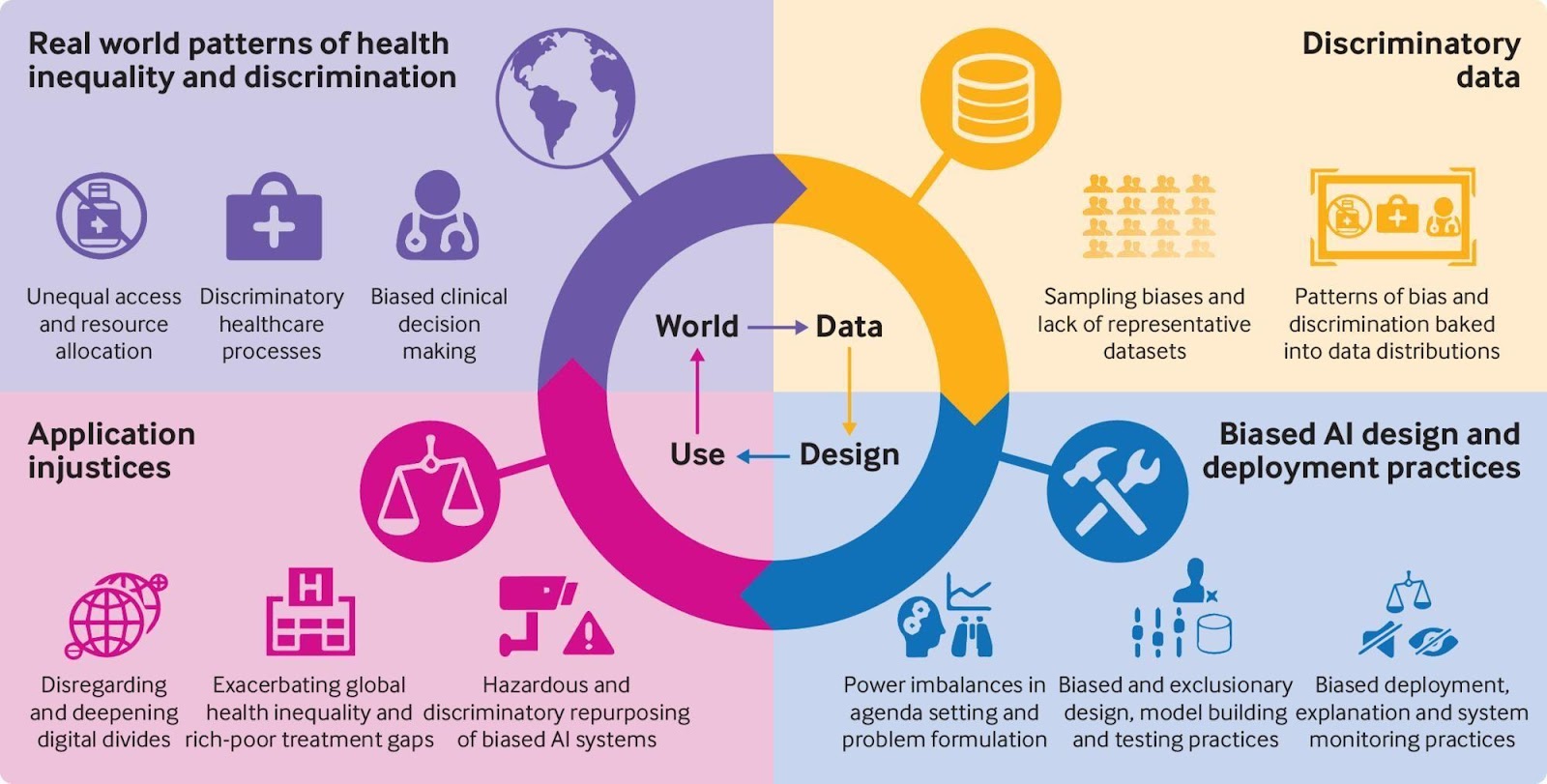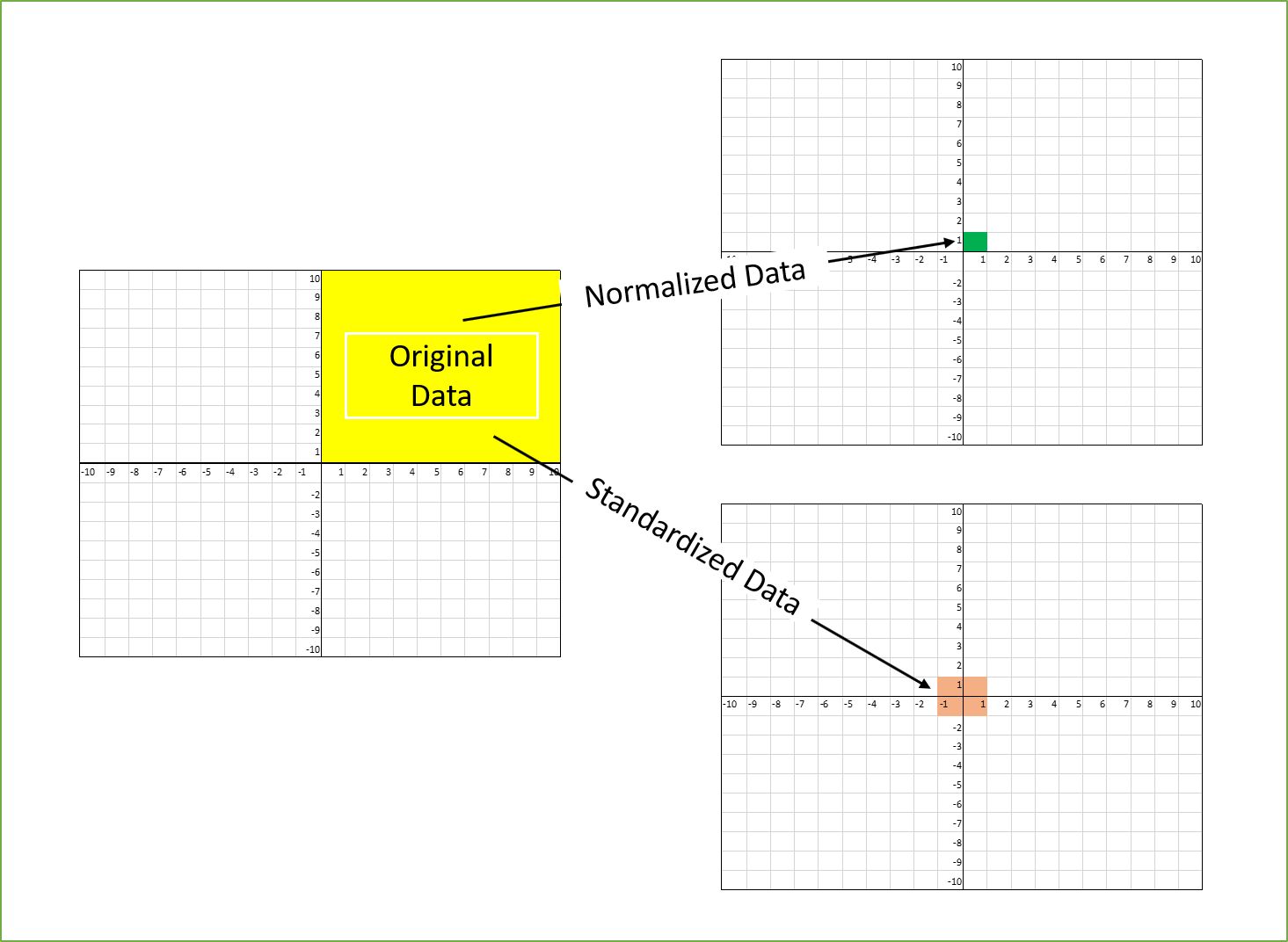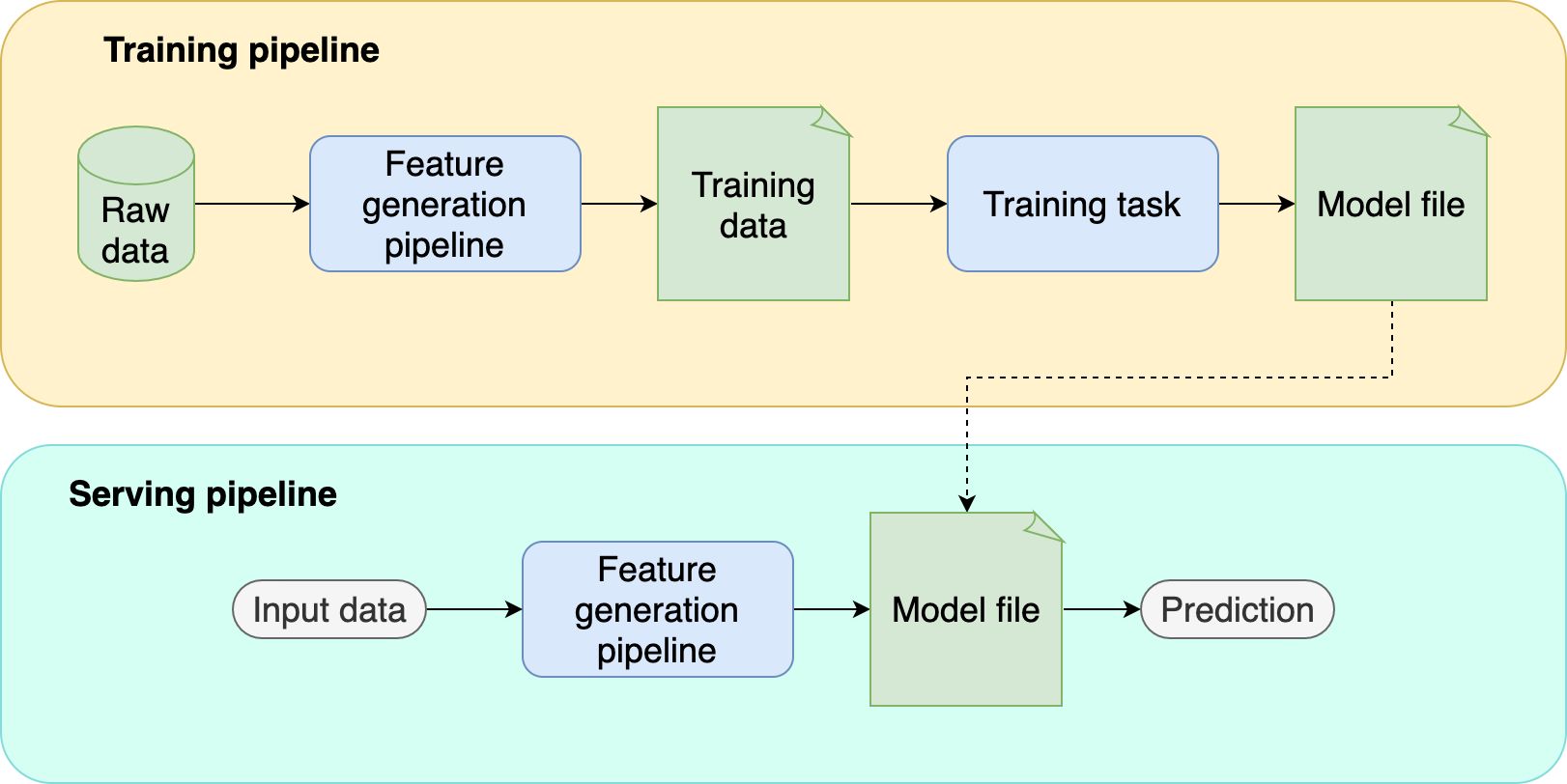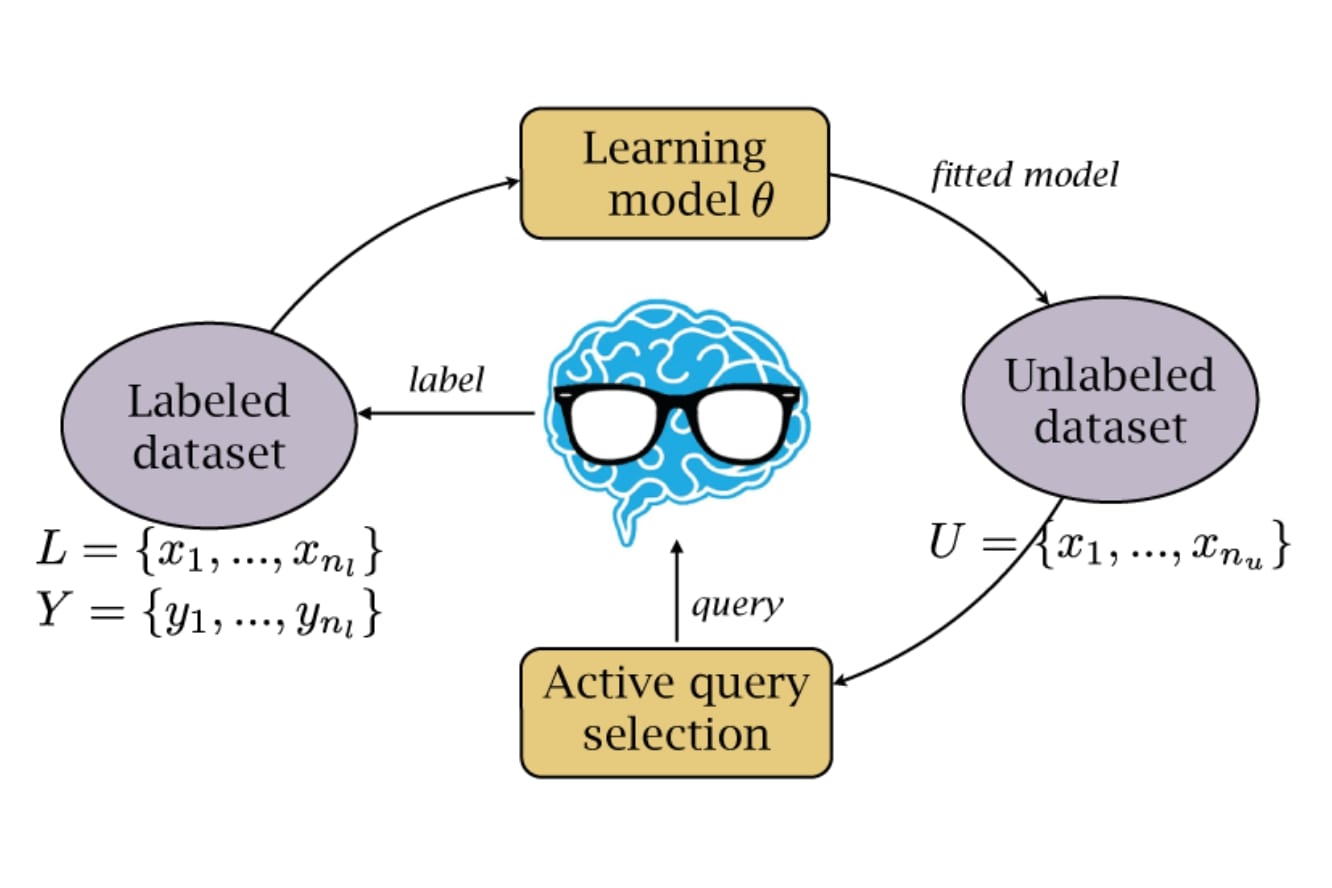Introduction
Bias in machine learning is a critical issue that has garnered significant attention in recent years. As the use of machine learning algorithms becomes more prevalent in various industries, it is essential to understand and address the potential biases that can be embedded in these systems. Bias refers to the systematic and unfair favoritism or disadvantage towards certain individuals or groups based on their characteristics such as race, gender, or age.
Machine learning algorithms are designed to learn patterns from data and make predictions or decisions based on those patterns. However, if the data used to train these algorithms contain biased information or if the algorithms themselves are biased, they can perpetuate and even amplify existing biases in society.
It is crucial to acknowledge that bias is not inherently a result of machine learning itself but rather a reflection of the biases present in the data and the decision-making process. Machine learning algorithms are only as unbiased as the data they are trained on, and the decisions made by these algorithms can have profound implications for individuals and societies.
In this article, we will explore the various types of biases that can arise in machine learning, understand the impact of bias in decision-making, discuss the ethical considerations surrounding bias, and delve into the challenges of reducing bias in machine learning models. Additionally, we will provide tips and strategies to mitigate bias and promote fairness in machine learning systems.
It is vital to address bias in machine learning to ensure that these systems are not perpetuating or amplifying existing societal biases. By understanding the causes and consequences of bias and implementing strategies to reduce it, we can work towards building more inclusive and equitable machine learning models.
Understanding Bias in Machine Learning
Bias in machine learning occurs when the predictions or decisions made by an algorithm are systematically skewed towards or against certain individuals or groups. It stems from the data used to train the algorithm, the algorithm itself, and the decision-making process.
There are different types of bias that can arise in machine learning:
- Sampling Bias: This type of bias occurs when the training data does not represent the actual population. For example, if a dataset predominantly includes data from a specific demographic group, the algorithm may struggle to make unbiased predictions for individuals from other demographics.
- Labeling Bias: Labeling bias arises from errors or subjectivity in the labeling process of the training data. If the labels are influenced by biases or stereotypes, the algorithm may learn to make biased predictions that align with the labeled data.
- Algorithmic Bias: This bias results from the design and implementation of the machine learning algorithm itself. Certain algorithms may inherently favor some groups over others due to the way they calculate probabilities or handle certain attributes.
It is important to note that bias can be both explicit and implicit. Explicit bias refers to biases that are intentionally programmed into the algorithm, while implicit bias arises as a result of biases present in the data or unintentional algorithmic decisions.
The impact of bias in machine learning can be far-reaching. Biased algorithms can lead to unfair treatment of individuals, perpetuate discrimination, and exacerbate existing social inequalities. In domains such as hiring, lending, and criminal justice, biased algorithms can have serious consequences, affecting people’s opportunities, rights, and quality of life.
Understanding and addressing bias in machine learning is crucial from an ethical perspective. We need to ensure that algorithms treat all individuals fairly, irrespective of their race, gender, age, or other protected characteristics. The responsibility lies not only with the developers and data scientists but also with organizations and policymakers to prioritize fairness and accountability in the deployment of machine learning models.
In the following sections, we will explore the ethical considerations surrounding bias in machine learning and discuss the challenges associated with reducing bias in these systems.
Common Types of Bias in Machine Learning
Bias in machine learning can manifest in various forms, and it is essential to identify and understand these types of biases to effectively mitigate them. Here are some common types of bias that can arise in machine learning:
- 1. Selection Bias: This bias occurs when the training data is not representative of the entire population, leading to biased predictions. For example, if a facial recognition algorithm is trained on a dataset predominantly comprising lighter-skinned individuals, it may struggle to accurately identify individuals with darker skin tones.
- 2. Gender Bias: Gender bias is a prevalent type of bias that can arise in machine learning algorithms. It can lead to discriminatory outcomes, such as gender-based pricing or biased hiring decisions. For instance, an algorithm used in the recruitment process may unintentionally favor male candidates over equally qualified female candidates due to biased historical hiring patterns in the training data.
- 3. Racial Bias: Racial bias can emerge in machine learning algorithms when historical or societal biases are encoded in the training data. This can result in unfair outcomes, such as biased law enforcement practices or discriminatory lending decisions.
- 4. Confirmation Bias: Confirmation bias occurs when the algorithm selectively considers and gives more weight to data that confirms preconceived notions or biases. This can reinforce stereotypes and limit the algorithm’s ability to make unbiased predictions.
- 5. Temporal Bias: Temporal bias refers to biases that arise due to changes in the distribution of data over time. If the training data does not reflect the current distribution, the algorithm may make inaccurate predictions.
It is crucial to note that these types of bias are not mutually exclusive and can interact with one another, leading to complex and compound biases. Additionally, biases can vary across different domains and applications of machine learning.
Addressing these biases requires a thoughtful and comprehensive approach. Data collection and preprocessing techniques should aim to minimize bias by ensuring diverse and representative datasets. Furthermore, algorithms need to be designed with fairness and transparency in mind, and appropriate evaluation measures should be implemented to detect and mitigate bias.
In the next section, we will explore the impact of bias in machine learning and the ethical considerations that arise from these biases.
Impact of Bias in Machine Learning
Bias in machine learning algorithms can have significant and far-reaching implications across various domains. Understanding the impact of bias is crucial to recognize the importance of addressing and mitigating these biases. Here are some key impacts of bias in machine learning:
- 1. Unfair Treatment: Biased algorithms can result in the unfair treatment of individuals or groups based on their characteristics such as race, gender, or age. This can lead to discriminatory outcomes in areas such as hiring, lending, and criminal justice, perpetuating social inequalities and limiting opportunities for marginalized communities.
- 2. Reinforcement of Stereotypes: Biased algorithms can reinforce and perpetuate existing stereotypes by making biased predictions or decisions. For example, if a recommender system consistently recommends certain types of content to specific demographic groups, it can further entrench stereotypes and limit diversity of perspectives and experiences.
- 3. Exacerbation of Inequalities: Biased algorithms can exacerbate social inequalities by perpetuating historical biases and discriminations. If historical data used for training contains biases, the resulting algorithms can reinforce and amplify those biases, leading to unequal treatment and opportunities for certain groups.
- 4. Loss of Trust and Legitimacy: When biases are identified in machine learning models or their outcomes, it can lead to a loss of trust and legitimacy in these systems. If users experience unfair treatment or discrimination due to biased algorithms, they may lose confidence in the technology and be skeptical about its reliability and fairness.
- 5. Ethical Concerns: Bias in machine learning raises ethical concerns related to fairness, transparency, and accountability. These concerns highlight the need for developers, organizations, and policymakers to prioritize a responsible approach in designing, deploying, and regulating machine learning systems.
Recognizing the impact of bias in machine learning is crucial to foster inclusivity, fairness, and trust in these systems. By addressing bias and striving for fairness, we can ensure that machine learning algorithms serve the common good and do not perpetuate or amplify societal inequalities.
In the following sections, we will explore the ethical considerations surrounding bias in machine learning and discuss the challenges associated with reducing bias in these systems.
Ethical Considerations of Bias in Machine Learning
Bias in machine learning algorithms raises significant ethical considerations that need to be carefully addressed. As technology plays an increasingly influential role in decision-making processes, it is crucial to ensure that these technologies are developed and used ethically. Here are some key ethical considerations related to bias in machine learning:
- 1. Fairness and Justice: Ensuring fairness and justice is a fundamental ethical consideration when it comes to machine learning. Bias in algorithms can lead to unequal treatment and outcomes, perpetuating societal inequalities. It is essential to strive for fairness in the decisions made by these algorithms, especially in domains such as hiring, loan approvals, and criminal justice.
- 2. Transparency and Explainability: Machine learning algorithms can be complex and difficult to interpret. However, it is essential for these algorithms to be transparent and explainable to users and stakeholders. The transparency of algorithms helps uncover biases and allows for accountability in the decision-making process.
- 3. Accountability and Responsibility: Developers and organizations have an ethical responsibility to be accountable for the biases in their machine learning systems. It involves recognizing the potential biases in data, identifying sources of bias, and developing strategies to minimize or eliminate those biases. Additionally, data scientists and developers should be vigilant in monitoring and updating models to ensure ongoing fairness.
- 4. User Consent and Privacy: Users should have the right to understand and consent to the use of their data in machine learning algorithms. It is essential to respect user privacy and provide clear explanations regarding data collection, usage, and potential biases. Transparent and informed consent processes can help maintain user trust and mitigate privacy concerns.
- 5. Bias in Training Data: Ethical considerations must encompass the data used to train machine learning algorithms. Bias in training data can stem from historical societal biases or human biases in data labeling. It is essential to evaluate and preprocess the training data to mitigate bias before training the algorithms.
Addressing these ethical considerations requires a collaborative effort between data scientists, developers, policymakers, and society as a whole. It is crucial to establish clear guidelines, policies, and regulations that promote fairness, transparency, and accountability in the development and use of machine learning algorithms.
In the following sections, we will dive into the challenges associated with reducing bias in machine learning and explore strategies to mitigate bias and promote fairness in these systems.
Challenges in Reducing Bias in Machine Learning
Reducing bias in machine learning algorithms is a complex and challenging task. While it is crucial to strive for fairness and equity, there are several challenges that need to be addressed. Here are some of the key challenges in reducing bias in machine learning:
- 1. Biased Training Data: The training data used to train machine learning algorithms may already contain biases due to historical or societal factors. These biases can be unintentionally learned and perpetuated by the algorithms. Identifying and mitigating bias in training data is a significant challenge, as it requires careful evaluation and preprocessing.
- 2. Lack of Diverse and Representative Data: Machine learning algorithms need diverse and representative data to make unbiased predictions. However, there is often a lack of diverse and inclusive datasets, especially in underrepresented communities. Collecting and maintaining diverse data can be challenging and may require proactive efforts to ensure inclusivity.
- 3. Algorithmic Complexity: Machine learning algorithms can be complex, making it difficult to understand and identify sources of bias. Biases can emerge from intricate interactions within the algorithms, making it challenging to pinpoint specific causes. Addressing bias requires understanding and monitoring the algorithms’ biases, which can be a complex and ongoing task.
- 4. Trade-Off Between Bias and Accuracy: Mitigating bias in machine learning algorithms can sometimes lead to a trade-off with accuracy. Reducing bias may result in sacrificing predictive performance, as biases in the data may contain useful information for making accurate predictions. Striking the right balance between fairness and accuracy is a challenge that developers need to navigate.
- 5. Changing Bias Over Time: Bias in machine learning can evolve and change over time due to societal shifts or changes in data distribution. Algorithms may struggle to adapt to these changes, leading to persistent or new biases. Continuously monitoring and updating machine learning models to ensure ongoing fairness is a challenge that requires proactive efforts.
Addressing these challenges requires a multidisciplinary approach, involving collaboration between data scientists, domain experts, ethicists, and policymakers. Strategies such as diverse data collection, rigorous evaluation and testing, algorithmic transparency, and regular model updates are crucial in reducing biases in machine learning algorithms and promoting fairness.
In the following sections, we will provide tips and strategies to mitigate bias in machine learning, addressing these challenges and promoting fairness in these systems.
Tips to Reduce Bias in Machine Learning
Reducing bias in machine learning algorithms requires a proactive and conscious effort to promote fairness and equity. While eliminating bias completely may be challenging, there are several strategies and tips that can help mitigate bias in machine learning. Here are some key tips:
- 1. Collecting Diverse and Representative Data: Ensure that the training data used for machine learning algorithms is diverse and representative of the target population. Include data from various demographics to prevent biased predictions and decision-making.
- 2. Preprocessing and Cleaning Data: Thoroughly evaluate and preprocess the training data to identify and mitigate biases. This includes identifying and removing any biased attributes, correcting mislabeled data, and addressing any limitations or biases in the data collection process.
- 3. Choosing the Right Machine Learning Algorithm: Consider the strengths and limitations of different machine learning algorithms when addressing bias. Some algorithms may be inherently more biased, while others offer more flexibility in reducing bias. Choose algorithms that align with the desired fairness objectives.
- 4. Regularization Techniques for Bias Reduction: Regularization techniques, such as L1 and L2 regularization, can help reduce bias in machine learning models. These techniques penalize certain features or attributes that may contribute to bias, promoting fairness in the model’s predictions.
- 5. Fairness and Transparency in Machine Learning: Ensure that machine learning models are designed with fairness and transparency in mind. Implement measures to assess and mitigate bias throughout the development process. Use techniques like explainable AI to enhance the interpretability and transparency of the model’s decision-making process.
- 6. Evaluating and Testing for Bias: Establish evaluation metrics and tests specifically designed to detect bias in machine learning algorithms. Regularly evaluate the model’s performance for different demographic groups and assess if the predictions are consistently fair and unbiased.
- 7. Monitoring and Updating Models for Bias Reduction: Continuously monitor the performance of machine learning models in real-world applications. Regularly check for any emerging biases or changes in biases over time. Update the models and data as needed to ensure ongoing fairness and prevent the persistence of biases.
Implementing these tips requires collaboration between data scientists, domain experts, and stakeholders to ensure that biases are actively addressed and fairness is prioritized. By embracing these strategies, machine learning algorithms can be effectively tailored to mitigate bias and contribute to more equitable and unbiased decision-making processes.
In the following sections, we will explore specific aspects of reducing bias in machine learning, diving deeper into each tip and providing further insights for promoting fairness in these systems.
Collecting Diverse and Representative Data
Collecting diverse and representative data is a critical step in reducing bias in machine learning algorithms. The quality and inclusivity of the training data directly influence the fairness and accuracy of the resulting models. Here are some key considerations for collecting diverse and representative data:
1. Identify the Purpose and Scope: Start by clearly defining the purpose and scope of the machine learning application. Understand the specific demographic groups or characteristics that need to be considered to ensure fair predictions or decisions.
2. Consider Intersectionality: Recognize that individuals may have multiple intersecting identities that can contribute to bias. Collect data that encompasses various combinations of attributes such as race, gender, age, and socioeconomic status to capture the complexity of human experiences.
3. Use Inclusive Data Gathering Methods: Ensure that the data collection methods are inclusive and respectful of diverse populations. Consider reaching out to underrepresented communities and involving them in the data collection process to improve representation.
4. Address Bias in Data Collection: Be conscious of potential biases that may exist in the data collection process. Biases can arise from factors such as the data collection instruments, measurement techniques, or sampling methods. Actively mitigate these biases to ensure the data collected is as comprehensive and unbiased as possible.
5. Consider Ethical Considerations and Privacy: Collect data in an ethical and privacy-conscious manner. Obtain informed consent from individuals, clearly communicate the purpose of data collection, and ensure that privacy and security measures are in place to protect sensitive information.
6. Validate and Verify Data Quality: Perform rigorous validation and verification processes to ensure the quality and reliability of the collected data. Check for inconsistencies, errors, or biases that may affect the accuracy and fairness of the machine learning model.
7. Continuously Update and Expand the Dataset: Recognize that data can evolve over time, and new biases may emerge. Regularly update and expand the dataset to reflect changes in societal dynamics and to capture evolving perspectives and experiences.
8. Seek External Feedback and Oversight: Engage external reviewers, experts, or auditors to provide an unbiased perspective on the data collection process. External feedback can help identify potential biases or gaps that may have been overlooked internally.
Collecting diverse and representative data is an ongoing process that requires continuous effort and engagement. By ensuring the inclusivity and fairness of the training data, machine learning algorithms can be better equipped to make unbiased predictions and decisions, contributing to more equitable outcomes.
In the next section, we will explore another crucial aspect of reducing bias in machine learning: preprocessing and cleaning the data.
Preprocessing and Cleaning Data
Preprocessing and cleaning the data is an essential step in reducing bias in machine learning algorithms. The quality and integrity of the training data significantly impact the fairness and accuracy of the resulting models. Here are some key considerations for preprocessing and cleaning the data:
1. Identify and Define Bias Metrics: Start by identifying the specific biases you want to address and define appropriate metrics to measure them. This can help guide the preprocessing and cleaning process and provide a quantifiable way to evaluate bias reduction efforts.
2. Assess Data Quality: Thoroughly assess the quality of the collected data. Check for missing values, inconsistencies, and errors. Data cleaning techniques such as imputation or removal of incomplete or erroneous data can help improve data quality.
3. Identify and Mitigate Sampling Bias: Sampling bias occurs when the data collection process is not representative of the intended population. Adjust the dataset to ensure that it adequately reflects the demographic composition of the target population. Consider oversampling or undersampling techniques to account for any imbalances.
4. Handle Missing Data Appropriately: Missing data can introduce biases if not handled properly. Explore techniques such as imputation (e.g., filling missing values with estimated values) or modeling missingness as a separate variable, to minimize the impact of missing data on the resulting models.
5. Correct for Labeling Bias: Labeling bias can arise from subjective or biased judgments during the data labeling process. Employ techniques such as active learning, where human labelers are provided with additional context or guidance to improve the quality and fairness of the labels.
6. Address Attribute and Feature Bias: Analyze the attributes and features used in the machine learning model and identify any potential biases. Mitigate bias by treating certain attributes as protected or sensitive and implementing fairness-aware preprocessing techniques, such as equalizing odds or demographic parity.
7. Regularize and Regularly Evaluate Models: Regularization techniques, such as L1 or L2 regularization, can help reduce the impact of specific features and attributes that may contribute to bias. Regularly evaluate and reevaluate the performance of the models to ensure that biases are adequately addressed and reduced.
8. Document Preprocessing Steps: Maintain clear and comprehensive documentation of the preprocessing steps performed on the data. This documentation ensures transparency and reproducibility, allowing others to understand the steps taken to reduce bias and evaluate the reliability of the resulting models.
Preprocessing and cleaning the data is an iterative process and requires continuous evaluation and improvement. By implementing appropriate techniques and strategies, biases can be mitigated, leading to fairer and more equitable machine learning models.
In the next section, we will discuss the importance of choosing the right machine learning algorithm to reduce bias.
Choosing the Right Machine Learning Algorithm
Choosing the right machine learning algorithm is crucial for reducing bias and promoting fairness in the resulting models. Different algorithms have varying capabilities and limitations when it comes to handling bias. Here are some considerations for selecting the appropriate machine learning algorithm:
1. Understand Algorithmic Biases: Gain a deep understanding of the biases that can be inherent in different machine learning algorithms. Some algorithms may intrinsically favor certain attributes or have limitations in dealing with imbalanced data. Being aware of these biases can help identify potential challenges and make informed choices.
2. Assess Algorithmic Fairness: Evaluate the fairness properties of different algorithms. Consider metrics like disparate impact, equalized odds, or statistical parity to assess the algorithm’s fairness in different demographic groups. Choose an algorithm that aligns with the desired fairness objectives and consider trade-offs with accuracy if necessary.
3. Seek Bias Mitigation Techniques: Look for machine learning algorithms that incorporate fairness-aware techniques or have built-in mechanisms to mitigate bias. For example, some algorithms include fairness constraints, regularizers, or post-processing steps to ensure fairness in the predictions.
4. Consider Flexibility and Interpretability: Assess the flexibility and interpretability of the algorithm. A flexible algorithm allows for more fine-grained control over the mitigation of bias by adjusting hyperparameters or incorporating additional constraints. Additionally, an interpretable algorithm can help explain the underlying decision-making process, aiding in the identification and reduction of biases.
5. Evaluate Performance and Robustness: Evaluate the performance and robustness of the algorithm in real-world scenarios. Consider factors such as the algorithm’s sensitivity to variations in the input data, its ability to handle imbalanced classes, and its generalization capabilities across different demographic groups.
6. Consider Ensemble Methods: Ensemble methods, such as combining multiple models or using techniques like cross-validation, can mitigate biases by averaging out individual biases and improving overall fairness and accuracy. Explore ensemble methods as a potential solution to reduce bias in machine learning models.
7. Keep Up with Research and Advances: Stay updated with the latest research and advances in machine learning algorithms for bias reduction. The field of fairness in machine learning is continuously evolving, and new algorithms and approaches are being developed to address bias effectively.
8. Test Different Algorithms: Experiment with multiple algorithms and compare their performance in terms of fairness, accuracy, and other relevant metrics. This iterative process allows for exploring different options and selecting the algorithm that best addresses the specific bias reduction goals.
Choosing the right machine learning algorithm is a critical step in reducing bias. It requires a thorough understanding of the algorithm’s capabilities, fairness properties, and interpretability. By selecting an algorithm that is well-suited for bias reduction, the resulting machine learning models can provide fairer and more equitable predictions and decisions.
In the next section, we will explore the use of regularization techniques for reducing bias in machine learning models.
Regularization Techniques for Bias Reduction
Regularization techniques play a vital role in reducing bias and promoting fairness in machine learning models. By incorporating regularization, these techniques help address biases that may arise from certain features or attributes in the data. Here are some common regularization techniques for bias reduction:
1. L1 and L2 Regularization: L1 and L2 regularization methods are widely used for bias reduction. L1 regularization (LASSO) imposes a penalty on the absolute values of the model’s coefficients, favoring sparsity and effectively reducing the impact of irrelevant features. L2 regularization (Ridge regression) penalizes the squared values of the coefficients, leading to more balanced and less extreme weights.
2. Elastic Net Regularization: Elastic Net regularization combines L1 and L2 regularization techniques to address bias. It strikes a balance between feature selection (L1 regularization) and feature coefficient shrinkage (L2 regularization), providing a more comprehensive approach to reducing bias.
3. Group Regularization: Group regularization allows for controlling the influence of specific groups of features collectively. It is particularly useful when addressing bias based on sensitive attributes such as gender or race. By imposing regularization on groups of features rather than individual ones, bias reduction can be applied at a higher level of granularity.
4. Fairness Constraints: Fairness constraints or fairness regularization terms can be integrated into the model optimization process to explicitly enforce fairness. These constraints aim to limit the disparity in predictions across different demographic groups, ensuring more equitable outcomes.
5. Post-processing Techniques: Post-processing techniques focus on modifying the outputs of the machine learning model to achieve fairness. Techniques like equalized odds and calibration can be applied to adjust the predicted probabilities or scores to align with fairness objectives.
6. Adversarial Training: Adversarial training involves training the model against an adversary that aims to find the biases in the model’s predictions. By explicitly considering various perturbations and challenging the model’s outputs, adversarial training can enhance the model’s robustness and fairness.
7. Hyperparameter Tuning: Regularization techniques often involve hyperparameters that control the strength of the regularization. Proper tuning of these hyperparameters is essential to strike the right balance between bias reduction and maintaining predictive accuracy. Hyperparameter tuning techniques such as grid search or Bayesian optimization can help identify the optimal values for regularization parameters.
8. Model Evaluation and Bias Monitoring: Regularly evaluate the performance of the model to assess its bias reduction capabilities. Monitor the model’s predictions for different demographic groups and ensure that the applied regularization techniques are effectively reducing bias without sacrificing accuracy and fairness.
Regularization techniques provide valuable mechanisms for bias reduction in machine learning models. By applying the appropriate regularization techniques and effectively tuning their parameters, models can be trained to make fairer predictions and decisions.
In the next section, we will discuss the importance of fairness and transparency in machine learning algorithms.
Fairness and Transparency in Machine Learning
Fairness and transparency are two essential principles that should underpin the development and deployment of machine learning algorithms. Fairness ensures that these algorithms treat all individuals fairly, without favoring or discriminating against any particular demographic group. Transparency, on the other hand, promotes openness and accountability by making the decision-making process of these algorithms understandable and explainable. Here’s why fairness and transparency are crucial in machine learning:
1. Ensuring Equal Treatment: Fairness in machine learning aims to ensure equal treatment and opportunities for all individuals, irrespective of their race, gender, age, or other protected characteristics. By proactively addressing bias and implementing fairness measures, machine learning models can help mitigate discriminatory practices and promote equal treatment.
2. Reducing Inequities and Biases: Transparent machine learning algorithms allow us to better understand and identify biases and inequities present in the decision-making process. By unraveling the reasons behind biased predictions or outcomes, we can actively work to reduce those biases and create fairer models.
3. Promoting Accountability: Transparency in machine learning ensures accountability by enabling users, stakeholders, and regulators to scrutinize the decision-making process. It allows for the identification of potential biases, discrimination, or other ethical concerns, prompting necessary interventions and improvements to prevent unjust outcomes.
4. Gaining User Trust: Transparent and fair machine learning models enhance user trust and confidence. When users understand the factors and considerations driving the algorithms’ predictions, they can make informed decisions and trust that the models are treating them fairly.
5. Mitigating Potential Harms: Fairness and transparency in machine learning help address potential harms that can arise from biased predictions or decisions. By actively working towards fairness and transparency, we can mitigate adverse impacts on marginalized groups and minimize the reinforcement of societal biases.
6. Explainability and Interpretability: Transparent models that offer explanations for their decisions are easier to interpret and understand. This is particularly important in sensitive domains such as healthcare or criminal justice, where stakeholders need to comprehend and validate the reasoning behind the model’s predictions.
7. Ethical and Legal Compliance: Fairness and transparency are crucial for complying with ethical and legal guidelines, such as anti-discrimination laws. By striving for fairness and ensuring transparency, organizations can navigate legal and ethical challenges and safeguard against potential legal liabilities.
Creating fairness and transparency within machine learning algorithms is a continuous and multidimensional effort. Developers, data scientists, and policymakers must work together to incorporate fairness-aware techniques, such as bias audits, algorithmic impact assessments, and fairness constraints. Moreover, models should be designed with a focus on interpretability and explainability to enhance transparency and foster user understanding.
In the next section, we will explore the importance of evaluating and testing for bias in machine learning algorithms.
Evaluating and Testing for Bias
Evaluating and testing for bias in machine learning algorithms is a crucial step in ensuring fairness and mitigating potential harm. It involves assessing the algorithm’s behavior and performance across different demographic groups to identify and quantify any biases present. Here are key considerations for evaluating and testing for bias:
1. Define Bias Metrics: Define specific metrics and criteria to assess bias in the algorithm’s predictions or decisions. These metrics should capture potential disparities or inequities that may arise based on protected attributes such as race, gender, or age.
2. Utilize Relevant Benchmarks and Baselines: Establish benchmark datasets or baselines that represent the desired standard of fairness. These benchmarks can provide a point of reference for evaluating the model’s performance and identifying areas of improvement.
3. Assess Disparate Impact: Evaluate whether the algorithm’s predictions disproportionately affect different demographic groups. Analyze the distribution of predictions and identify any disparities or disproportionalities that may indicate bias.
4. Measure Calibration: Assess the calibration of the model’s predictions across different groups. Calibration refers to the agreement between predicted probabilities and observed frequencies. A well-calibrated model ensures that predicted probabilities accurately reflect the true likelihood of an outcome.
5. Evaluate Overall Performance: Consider both fairness and overall performance metrics when assessing the algorithm. It is essential to strike a balance between fairness and accuracy, ensuring that bias reduction efforts do not detrimentally impact the model’s predictive power.
6. Consider Intersectionality: Analyze how different combinations of attributes interact and contribute to bias. Intersectional analyses can uncover biases that may be overlooked when evaluating groups in isolation and provide a more comprehensive understanding of the model’s behavior.
7. Assess Data Collection Bias: Evaluate if biases have influenced the data collection process. Biases in data collection can propagate into the model’s predictions, leading to biased outcomes. Identify and address potential biases in the training data to improve fairness in the algorithm.
8. Conduct External Audits and Reviews: Seek external audits and reviews by independent experts to validate the fairness evaluation and testing process. External perspectives can provide additional insights, identify blind spots, and ensure a thorough assessment of algorithmic biases.
Regularly evaluating and testing for bias is an iterative and ongoing process. It helps identify areas of improvement, gauge progress in reducing bias, and ensure that the algorithm’s predictions are fair and equitable across diverse populations. By proactively addressing biases through rigorous evaluation and testing, machine learning algorithms can contribute to a more just and inclusive society.
In the next section, we will discuss the importance of monitoring and updating models for bias reduction.
Monitoring and Updating Models for Bias Reduction
Monitoring and updating machine learning models is a critical aspect of reducing bias and ensuring ongoing fairness in decision-making. As societal dynamics evolve and new biases emerge, it is essential to continuously assess and improve the models. Here are key considerations for monitoring and updating models for bias reduction:
1. Establish Monitoring Protocols: Define clear protocols and processes for monitoring the model’s performance and identifying potential biases. Regularly track and analyze the model’s predictions and outcomes, paying specific attention to any disparities or changes in biases over time.
2. Gather Real-World Feedback: Actively solicit feedback and input from users, stakeholders, and impacted communities. Their insights can provide valuable perspectives on bias and help uncover potential limitations or biases in the model’s predictions.
3. Analyze Feedback Loops: Evaluate the feedback loops that exist between the model’s predictions and the real-world outcomes. Biases in the outcomes may indicate biases in the model. Analyze and understand how the model’s predictions may contribute to or reinforce existing biases in decision-making processes.
4. Update Training Data: As biases are identified and understood, update the training data to address those biases. Collect additional data or modify existing data to ensure more diversity, inclusivity, and representativeness. Continuously strive to improve the quality and fairness of the data used to train the model.
5. Regularly Evaluate Performance Metrics: Regularly assess the model’s performance metrics, including fairness, accuracy, and other relevant measures. Establish a benchmark for acceptable levels of fairness and monitor the model’s performance against these metrics to ensure ongoing progress in bias reduction.
6. Upgrade Algorithmic Approaches: Stay informed about advancements in algorithmic techniques and approaches for bias reduction. Incorporate new techniques or updates to existing algorithms that are specifically designed to enhance fairness and mitigate biases.
7. Involve a Diverse Range of Stakeholders: Collaborate with a diverse range of stakeholders to inform the monitoring and updating process. This can include domain experts, ethicists, impacted communities, and regulators. By considering multiple perspectives, blind spots can be identified and addressed more effectively.
8. Communicate Updates and Progress: Transparently communicate the updates and progress in bias reduction to build trust and maintain accountability. Keep users, stakeholders, and impacted individuals informed about the steps taken to address biases and the ongoing efforts to ensure fairness in the decision-making process.
Monitoring and updating models for bias reduction is an iterative process that requires ongoing commitment and collaboration. By actively monitoring the model’s performance, continuously improving the training data, and upgrading algorithmic approaches, bias can be reduced over time, and the models can make more equitable and unbiased predictions and decisions.
In the next sections, we will discuss specific techniques and approaches for mitigating bias and promoting fairness in machine learning algorithms.
Conclusion
Bias in machine learning algorithms poses significant ethical challenges and can lead to unfair treatment and discriminatory outcomes. However, by actively addressing bias and prioritizing fairness, we can work towards creating more equitable and inclusive machine learning models.
In this article, we explored the various types of biases that can arise in machine learning algorithms, including sampling bias, labeling bias, and algorithmic bias. We discussed the impact of bias, both in terms of perpetuating inequalities and eroding trust in these systems. Ethical considerations surrounding bias in machine learning were highlighted, emphasizing the importance of fairness, transparency, and accountability.
We also delved into the challenges faced in reducing bias, such as biased training data, lack of diversity, and algorithmic complexity. To mitigate bias, we provided tips such as collecting diverse and representative data, preprocessing and cleaning the data, choosing the right machine learning algorithm, applying regularization techniques, prioritizing fairness and transparency, evaluating and testing for bias, and monitoring and updating models.
Reducing bias requires an ongoing commitment to fairness and inclusivity. It demands collaboration among data scientists, domain experts, policymakers, and affected communities. Transparency, explainability, and engagement with diverse stakeholders are essential to building trust and ensuring that machine learning models serve society’s best interests.
By implementing strategies to reduce bias, we can overcome challenges and create machine learning models that are fair, transparent, and accountable. As technology continues to permeate various domains of our lives, it is our responsibility to ensure that these powerful tools serve all individuals equitably and contribute to a more just and inclusive world.

























